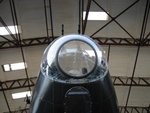I am interested in making a diorama.
I will (try to) show a –badly hit- flying Avro Lancaster (specifically the 1/72 model from Hasegawa) and the crew leaving the plane in their parachutes.
I want to show the escape hatch open.
But i don't know where it is and how does it look when it is open....
Could someone please help me???
Are there any photos or diagrams??
I have found information in this site that i couldn't imagine existed...
So I hope someone will be able -and willing- to answer my questions...
Thanks in advance for any help...
I will (try to) show a –badly hit- flying Avro Lancaster (specifically the 1/72 model from Hasegawa) and the crew leaving the plane in their parachutes.
I want to show the escape hatch open.
But i don't know where it is and how does it look when it is open....
Could someone please help me???
Are there any photos or diagrams??
I have found information in this site that i couldn't imagine existed...
So I hope someone will be able -and willing- to answer my questions...
Thanks in advance for any help...


